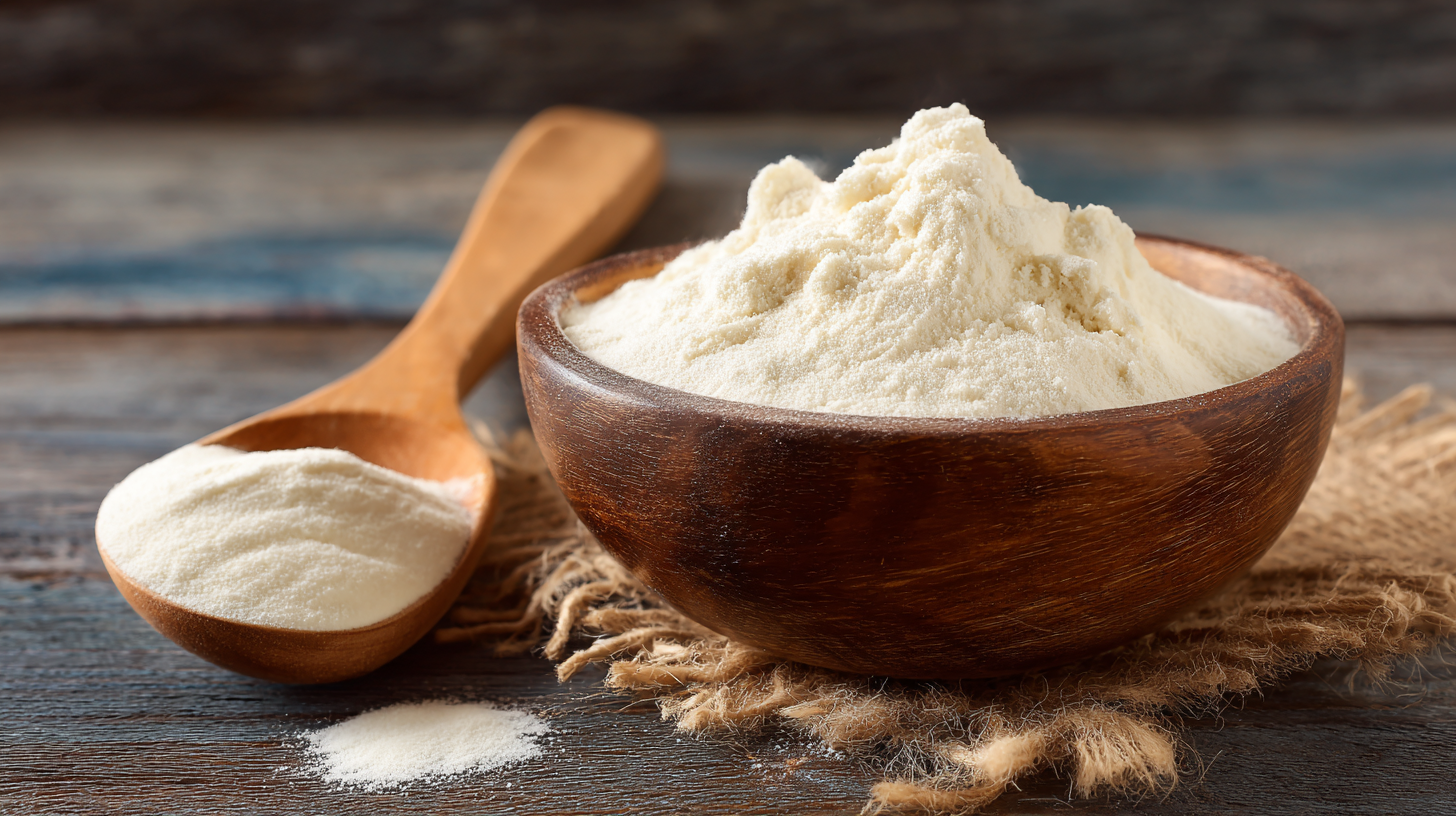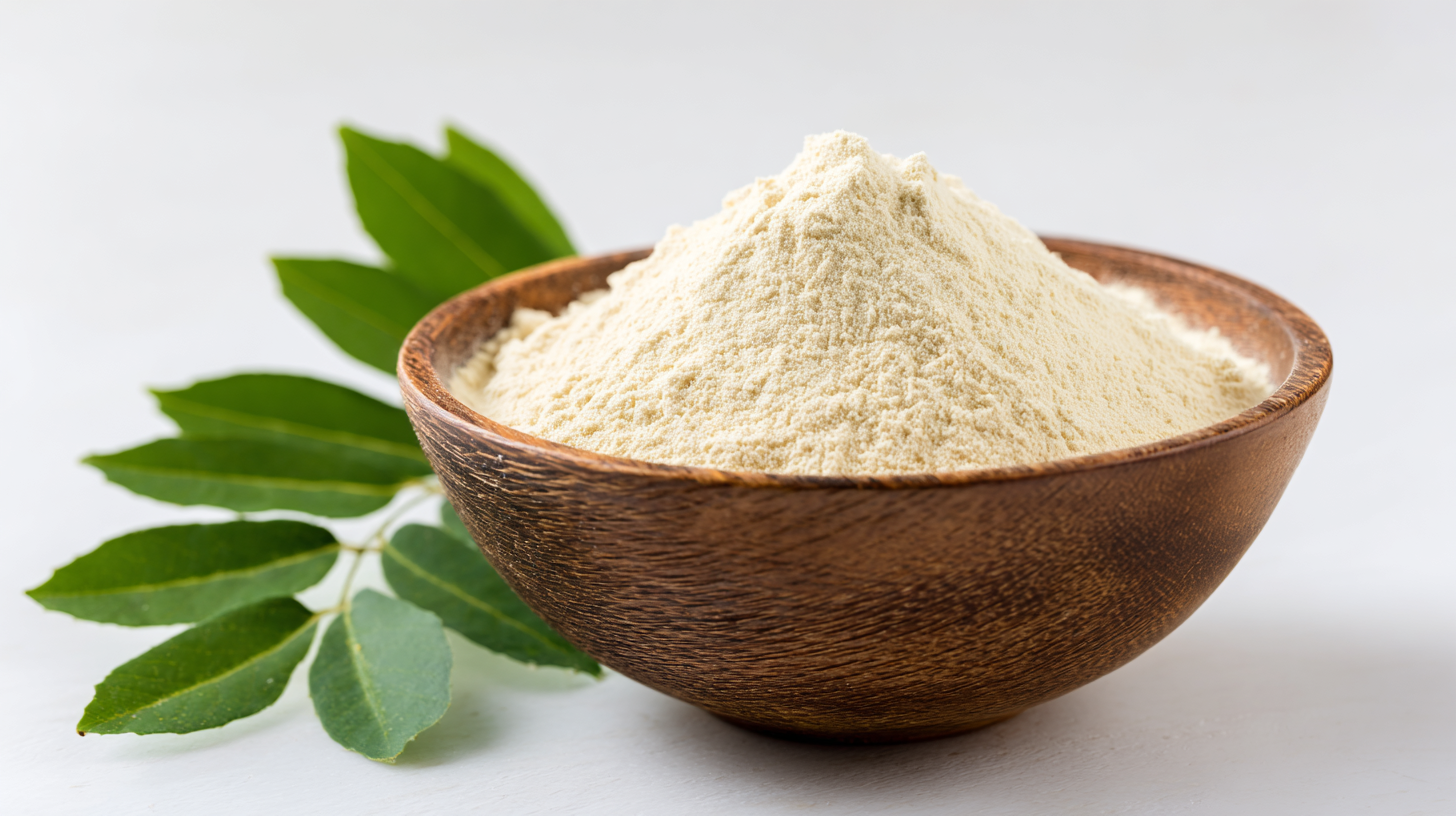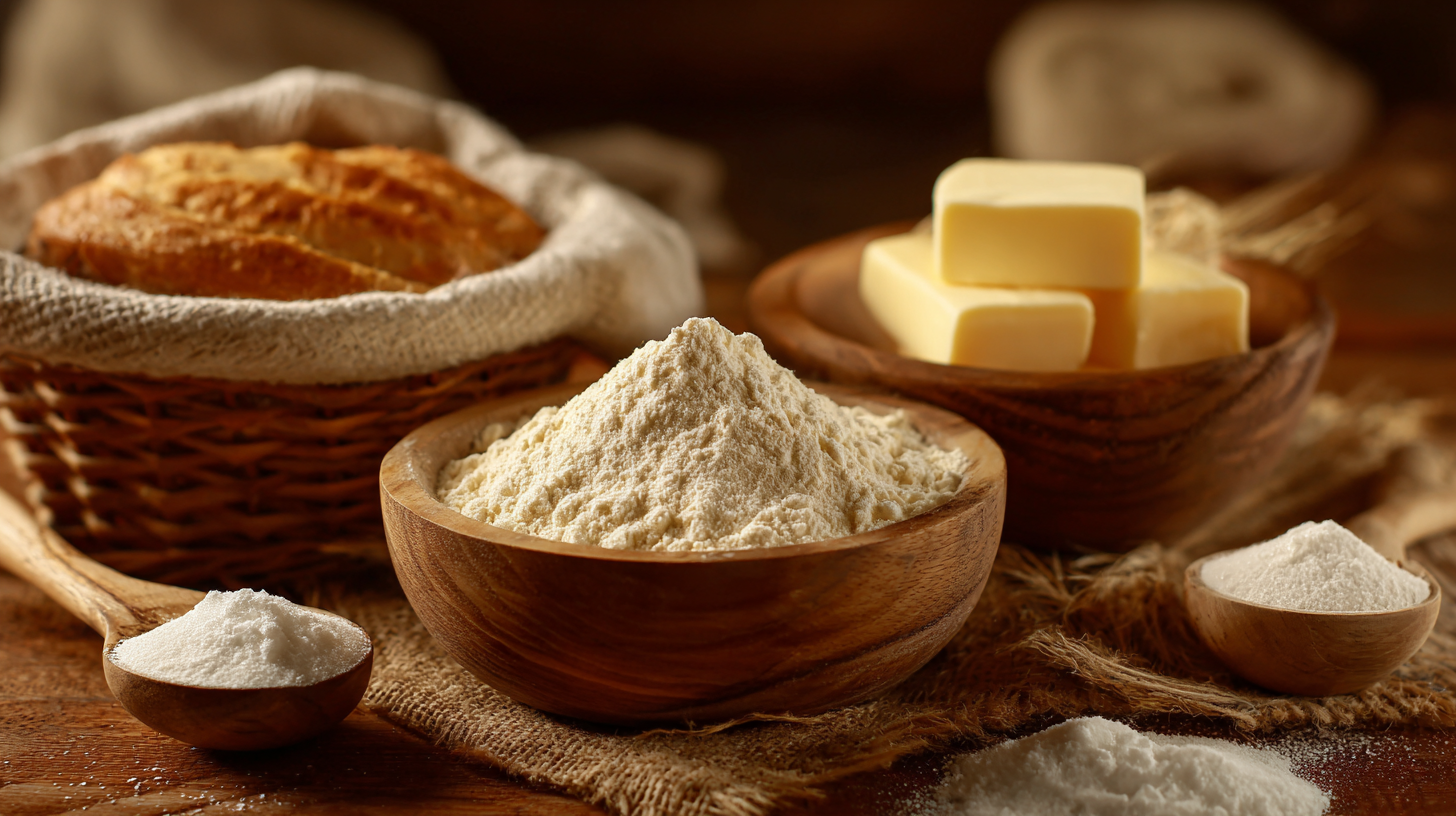Leave Your Message
As the food and cosmetic industries continue to evolve, the demand for innovative ingredients is on the rise. Among these, Xanthan Gum Ingredients have gained significant attention due to their versatile applications and functionality. According to a recent market analysis by Mordor Intelligence, the global xanthan gum market is projected to reach USD 1.07 billion by 2025, growing at a CAGR of 5.4%. This growth is driven by the increasing awareness regarding clean label products and the demand for natural thickeners and stabilizers in various formulations.
 Dr. Emily Foster, a leading expert in food technology and a key figure at the International Food Science Association, emphasizes the potential of Xanthan Gum Ingredients in contemporary formulations, stating, "Xanthan gum offers an unparalleled ability to improve texture, stability, and mouthfeel in both food and cosmetic products, making it an essential component for manufacturers aiming to meet consumer expectations." As we delve into the top Xanthan Gum Ingredients for enhanced applications, it becomes evident that understanding their properties and best practices is crucial for industry professionals seeking to leverage these ingredients effectively.
Dr. Emily Foster, a leading expert in food technology and a key figure at the International Food Science Association, emphasizes the potential of Xanthan Gum Ingredients in contemporary formulations, stating, "Xanthan gum offers an unparalleled ability to improve texture, stability, and mouthfeel in both food and cosmetic products, making it an essential component for manufacturers aiming to meet consumer expectations." As we delve into the top Xanthan Gum Ingredients for enhanced applications, it becomes evident that understanding their properties and best practices is crucial for industry professionals seeking to leverage these ingredients effectively.
In this exploration, we will provide insight into the most effective Xanthan Gum Ingredients set to shape the future of food and cosmetic applications, offering actionable tips for implementation and formulation that can elevate product performance in a competitive marketplace.
As we progress into 2025, the usage of xanthan gum in food products continues to evolve, reflecting significant trends driven by consumer preferences and technological advancements. According to a recent report by Grand View Research, the xanthan gum market is projected to reach USD 1.1 billion by 2025, growing at a compound annual growth rate (CAGR) of 5.6% from 2020. This growth is largely attributed to the increasing demand for gluten-free and clean-label products, as xanthan gum serves as a versatile thickening agent and stabilizer that enhances the texture and mouthfeel of various formulations.
One of the notable trends in xanthan gum usage is its growing application in plant-based food products. A study from McKinsey shows that the plant-based food market is expected to reach USD 74 billion by 2027, driven by health-conscious consumers seeking alternatives to animal-derived ingredients. Xanthan gum plays a crucial role in mimicking the texture of traditional meat and dairy products, making it an essential ingredient for manufacturers looking to improve the sensory attributes of their products. Furthermore, its ability to maintain product stability in varying temperatures and conditions increases its appeal in both packaged goods and freshly prepared items, highlighting xanthan gum's role in catering to the future of food innovation.
The innovative applications of xanthan gum in the cosmetic industry are continually expanding, driven by consumer demand for products that offer enhanced functionality and efficacy. As a versatile biopolymer, xanthan gum provides thickening, stabilizing, and emulsifying properties that improve the texture and stability of cosmetic formulations. According to a recent report by Grand View Research, the global xanthan gum market is expected to reach USD 1.09 billion by 2025, with significant growth attributed to its use in personal care products.
Formulations incorporating xanthan gum not only enhance the sensory aspects of cosmetics but also contribute to the overall skin feel and performance. Its bio-compatibility and ability to form gel-like structures allow for the incorporation of active ingredients, making it a valuable component in serums and moisturizers. Furthermore, studies indicate that xanthan gum can enhance the delivery of antioxidants and vitamins, resulting in improved skin hydration and protection. As brands look to innovate, the strategic use of xanthan gum in cosmetic applications will likely become a focal point in meeting the evolving needs of consumers for both performance and luxury in their skincare routines.

Xanthan gum has emerged as an essential ingredient in clean label food production due to its ability to enhance texture and stability without compromising transparency. As consumers increasingly seek products with minimal additives, xanthan gum provides a natural thickening and emulsifying agent that meets these demands. Its versatility allows it to be used in a wide range of applications, from salad dressings and sauces to gluten-free baked goods, making it a staple for manufacturers aiming for clean label formulations.
Tips for Using Xanthan Gum: When incorporating xanthan gum into your recipes, start with small amounts. Typically, just 0.5% to 1% of the total weight of the mixture is sufficient to achieve the desired thickness. Also, remember to hydrate xanthan gum in liquids before adding it to dry ingredients to prevent clumping. This ensures a smooth texture in your final product.
Another key benefit of xanthan gum in food production is its ability to maintain consistency across varying temperatures. This characteristic is particularly beneficial for frozen products, as xanthan gum helps to prevent ice crystal formation, resulting in a creamier texture upon thawing. By leveraging the unique properties of xanthan gum, food manufacturers can create high-quality, clean label products that resonate with health-conscious consumers.
As consumers increasingly seek eco-friendly options, the sustainable sourcing of xanthan gum is becoming vital in the cosmetics industry. According to market projections, the global xanthan gum market is anticipated to expand from USD 736.84 million in 2025 to USD 1.1 billion by 2033. This growth underscores the rising demand for natural ingredients, a trend that resonates deeply with the ideals of clean and sustainable beauty. By incorporating xanthan gum, which is derived from fermenting a sugar with specific bacteria, cosmetic brands can enhance the texture and stability of their products while adhering to environmentally responsible practices.
 Tips for incorporating xanthan gum in your formulations: First, ensure the source of xanthan gum you select is certified sustainable to align with your brand’s eco-friendly values. Additionally, consider pairing xanthan gum with other natural ingredients to amplify its skin benefits, harnessing its capacity to boost moisture retention and improve product application. Lastly, educating consumers on the benefits of such ingredients can further enhance brand loyalty and customer satisfaction in this competitive market.
Tips for incorporating xanthan gum in your formulations: First, ensure the source of xanthan gum you select is certified sustainable to align with your brand’s eco-friendly values. Additionally, consider pairing xanthan gum with other natural ingredients to amplify its skin benefits, harnessing its capacity to boost moisture retention and improve product application. Lastly, educating consumers on the benefits of such ingredients can further enhance brand loyalty and customer satisfaction in this competitive market.
The boom in the natural ingredients market, which is projected to grow at a CAGR of 3.6%, highlights the necessity for cosmetic companies to adapt to this demand. By prioritizing sustainable sourcing of xanthan gum, brands not only contribute to environmental conservation but also position themselves as leaders in the emerging green cosmetics movement.
When formulating products with xanthan gum, it is essential to consider its unique properties to maximize its effectiveness in both food and cosmetic applications. Xanthan gum acts as a thickening and stabilizing agent, providing texture and consistency. To achieve optimal performance, it is crucial to incorporate xanthan gum at the right stage of formulation.
**Tips for Optimizing Xanthan Gum Incorporation:**
1. **Hydration**: Always hydrate xanthan gum in a cool liquid. Allow it to disperse completely before adding other ingredients to ensure a uniform texture.
2. **Temperature Control**: Introducing xanthan gum at room temperature can help prevent clumping. Avoid adding it to overly hot mixtures, as this can lead to a decrease in its thickening ability.
3. **Mixing Techniques**: Use high-shear mixing methods to effectively integrate xanthan gum into your formulation. This helps achieve a smooth and homogeneous blend without lumps.
By focusing on these tips, formulators can harness the full potential of xanthan gum, enhancing the quality and performance of their food and cosmetic products.
| Ingredient | Application | Optimal Concentration (%) | Benefits |
|---|---|---|---|
| Xanthan Gum | Food Products | 0.1 - 0.5 | Thickener, stabilizer, and improves texture |
| Sodium Citrate | Cosmetics | 0.5 - 2.0 | pH buffer and stabilizer |
| Glycerin | Skin Care | 2.0 - 5.0 | Moisturizer and humectant |
| Citric Acid | Food Preservation | 0.1 - 0.5 | Enhances flavor and preserves quality |
| Cetearyl Alcohol | Hair Products | 1.0 - 3.0 | Emollient and thickening agent |
